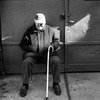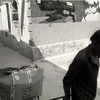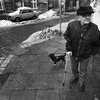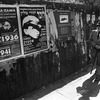Pautsch Portrait Pagaent
The Portraits of Fryderyk Pautsch: Archdiocesan Museum, ul. Kanonicza 19 (until December 30th)
Even if you don't like the paintings in this exhibition it's worth a stroll through the building that's showing them. The show is being organized by the Church at the Archdiocesan Museum - a sprawling baroque palace at the foot of the Royal castle. Pope John Paul II lived here twice - first in modest rooms as a young priest and later in more grand apartments when he was elected Bishop. One of the prettiest prospects in the city - and one which his Holiness must have woken up to for many years - is the view onto the small renaissance courtyard at the heart of the complex. Certainly fit for a king.
But back to the paintings, and in fact, this is a gem of an exhibition and it would be worth a look regardless of the venue. Fryderyk Pautsch (1877-1950) was a Polonized artist of Czech-German descent. He was born in Polish Delatyn near the city of Stanislawow (now in the Ukraine), and he studied at the universities of Lwow and Cracow, before moving on to the newly founded Academy of Art (Cracow).
Although now a lesser known figure than some of his contemporaries such as Wyspianski or Mehoffer, Pautsch had a long and distinguished career, both as an artist and as a teacher - he held numerous academic posts over the years in Poland and Germany. He was decorated with the Cross of the Commander's Order of Poland's Revival in 1936.
This show in the Archdiocesan Palace is in fact the first of a series of exhibitions that will be devoted to the artist, allowing for a total reappraisal of his work. The opening of the retrospective coincides with the tenth anniversary of the museum, and Pautsch is certainly a distinguished enough figure to merit such a compliment.
The current exhibition focuses on portraiture. In contrast to the sickly, short-lived artists of stereotype (of which the Mloda Polska, 'Young Poland' group gave birth to more than a few) Pautsch lived a long life, and he was prolific in his trade.
Thus even though some fine portraits aren't here there are still plenty to see, crammed as they are into three spacious rooms in the Archbishops palace. It's a bit of an overload, but once you've settled in there are plenty of gems to savour.
The classic Pautsch portrait has something of the dreamy fantasy of Polish favourite Malczewski, but his colours, though vibrant, are less sickly than those of the more famous master.
His large portrait of his walrus-moustached father (the portraits of himself and his family are the best in the show) is well worth a look. Here his father sits in an ethereal landscape at the break of dawn, with a river flowing off into the background. It has a sweet, dreamy melancholia that's Polish to the core.
There are a host of other portraits, including many of well-known Cracovians. Some of Pautsch's self-portraits - also excellent - are reminiscent of Sargeant, but more so his compatriot, Piotr Michalowski, one of the towering figures in Polish nineteenth century painting.
This is a fine introduction to the world of Pautsch, and an intriguing prelude to the next installment - the Pautch exhibitions will be arranged thematically, and he is perhaps most famous for his paintings of the mythologized Hucul Highlanders, who inhabit the East Carpathian mountains.
After you've looked around you can explore the rest of the palace. Some of the rooms have been rather over-enthusiastically restored, with rather heavy use of colour, but it's an interesting insight into the splendour of the Church. Look out for the portrait of Pope John Paul II doing a 'V sign' - how did that one slip through the net?!

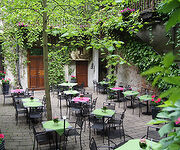 Kawaleria Szarza Smaku
Kawaleria Szarza Smaku
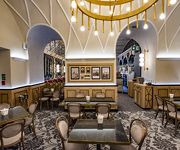 Europejska
Europejska
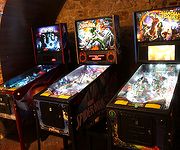 Krakow Pinball Museum
Krakow Pinball Museum



